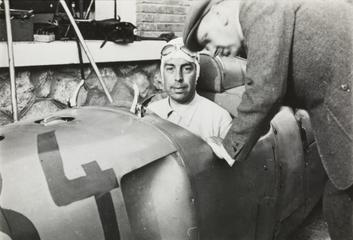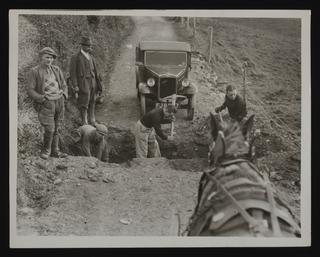
Daily Herald Photograph; Smith's Watch and Clock Factory
- Made:
- 1946 in Cheltenham




One photograph titled 'Britain All Out to Capture the World's Watch and Clock Market'. An interior shot of the Smith's watch and clock factory, at London or Cheltenham, showing a woman operating six machines.
The photograph is one of a series taken to showcase an emerging clock and watch making industry in the UK, which at the time of publishing in 1946 was set to rival Switzerland and America.
The full caption attached to back of the photograph reads as follows:
In Factories as far apart as London and Cheltenham, British craftsmen and women are working in all an all out endeavor to capture the world;d watch and clock market, hitherto held unchallenged by Switzerland and America.
Smith's clocks have for years held an honored place in the world's market, but now they, in conjunction with the British Ingersoll company, are extending their plants and their outputs in an attempt to take a foremost place as suppliers of the world market for watches and clocks. Very shortly a great new factory will be on production as Ystradgynlais in South Wales.
In the meantime the work is concentrated in the great Smith factories at London and Cheltenham, where this series of photographs was made.
At Cheltenham a minimum of 500 watches a week, which it is hoped to step up to 1000, are being turned out, in addition to hundreds of clocks. Each clock contains 243 component parts, all of which are made in the factory. It takes 25 people 3 1/2 minutes working time to assemble one clock. 75 per cent of the watches and clocks being turned out in the Smith factories are destined for the export market, the home market being allowed only to retain a quarter of the entire output.
Details
- Category:
- Photographs
- Collection:
- Daily Herald Archive
- Object Number:
- 1983-5236/47290
- Materials:
- paper
- type:
- photographic print



